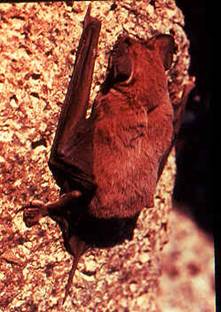
The Molossidae, or free-tailed bats, are a family of bats within the order Chiroptera. The Molossidae is the fourth-largest family of bats, containing about 110 species as of 2012. They are generally quite robust, and consist of many strong-flying forms with relatively long and narrow wings with wrinkled lips shared through their genus. Their strong flying form allows them to fly 60 miles per hour using tail winds and at altitudes over 10,000 feet. This makes them unique among bats, as they are the only bat family that withstands the elevation. They are widespread, being found on every continent except Antarctica. They are typically found in caves, abandoned mines, or tunnels.

Bulmer's fruit bat is a megabat endemic to New Guinea. It is listed as a critically endangered species due to habitat loss and hunting. It is the only member of the genus Aproteles. Due to its imperiled status, it is identified by the Alliance for Zero Extinction as a species in danger of imminent extinction.
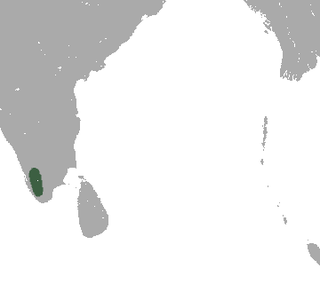
Salim Ali's fruit bat is a rare megabat species in the monotypic genus Latidens. It was first collected by Angus Hutton, a planter and naturalist in the High Wavy Mountains in the Western Ghats of Theni district, Tamil Nadu in South India in 1948. It was initially misidentified as a short-nosed fruit bat (Cynopterus) but later identified by Kitti Thonglongya as a new species and was named after Indian ornithologist Salim Ali in 1972.

The New Guinea long-eared bat is a small species of bat. It is found only in Papua New Guinea.
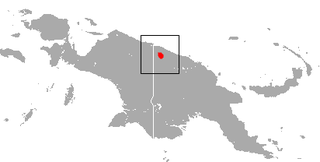
Hill's roundleaf bat is a species of bat in the family Hipposideridae endemic to Papua New Guinea.

The Maggie Taylor's roundleaf bat is a species of bat in the family Hipposideridae. It is found in West Papua (Indonesia) and Papua New Guinea.
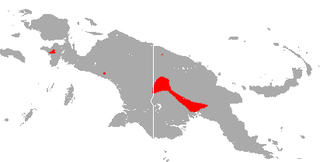
Wollaston's roundleaf bat is a species of bat in the family Hipposideridae. It is found in West Papua, Indonesia and Papua New Guinea. It was named after the explorer Sandy Wollaston.

The dragon tube-nosed fruit bat is a species of bat in the family Pteropodidae. It is found on both sides of New Guinea. It is slightly smaller but otherwise similar in appearance to N. albiventer, differing by having more profuse, dark spotting on its wing membranes, and smaller shorter canines. The similarity between the species has been a source of possible misidentifications. The records of this species from Papua New Guinea are associated with freshwater swamps and rivers.
The Javan mastiff bat is a species of bat in the family Molossidae that is endemic to Indonesia.
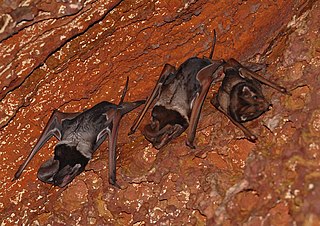
Otomops is a genus of bat in the family Molossidae. Molecular sequence data supports it as a monophyletic taxon, although not a number of other molossid genera.

Johnstone's mastiff bat is a species of bat in the Molossidae family endemic to Indonesia.

The large-eared free-tailed bat is a species of bat in the family Molossidae native to Africa.
The big-eared mastiff bat is a species of bat in the Molossidae family endemic to Papua New Guinea. It is only known from eleven specimens and it is not easy to survey. It forages in rainforest canopy and roosts in tree hollows. It is likely more widespread than currently known but additional research is needed.

Wroughton's free-tailed bat is a free-tailed bat formerly considered to be confined to the Western Ghats area of India, though it has also recently been discovered in northeast India and in a remote part of Cambodia. It is classified as a Data Deficient species as little is known about their habitat, ecology, or foraging range.

The Central Range montane rain forests is a tropical moist forest ecoregion on the island of New Guinea. The ecoregion covers the Central Range of the New Guinea Highlands, which extends along the spine of the island. The montane rain forests of the ecoregion are distinct from the surrounding lowland forests, and are home to many endemic plants and animals.
The New Guinea free-tailed bat, sometimes designated the New Guinea mastiff bat, is a species of free-tailed bat that inhabits the Chimbu highlands of Papua New Guinea. Although Koopman described A. kuboriensis as a subspecies of the nearby A. australis, the 2005 reference catalogue Mammal Species of the World suggested that analysis had established these as distinct species.

The Madagascar free-tailed bat or Malagasy giant mastiff bat is a species of free-tailed bat formerly included as a subspecies of the large-eared free-tailed bat, but that was later considered to be a distinct, Malagasy species. The Madagascar free-tailed bat is endemic to northern, western, and southern Madagascar.

Harrison's large-eared giant mastiff bat is a species of bat found in Northeast Africa and the Arabian Peninsula. It was described as a new species in 2015. The IUCN evaluates it as a vulnerable species.














